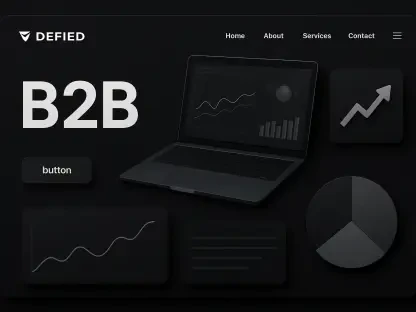Meet Anastasia Braitsik, a global leader in SEO, content marketing, and data analytics, who has been at the forefront of digital marketing innovation for years. With the rapid rise of AI-driven discovery, Anastasia has turned her expertise to large language model (LLM) optimization, helping brands navigate this emerging landscape. In this interview, we dive into the evolving world of LLMs, exploring how businesses can track their presence, measure impact, and optimize content for AI-generated results. From the challenges of visibility to the future of marketing strategies, Anastasia shares actionable insights on staying ahead in 2026’s digital ecosystem.
How would you describe LLM optimization and its significance for brands in today’s digital space?
LLM optimization is all about ensuring brands show up effectively in AI-driven responses from tools like ChatGPT or Gemini. It’s a new frontier where we’re figuring out how to influence visibility in conversational, AI-generated content rather than traditional search results. For brands, this is huge because more people are turning to these models for answers, research, and recommendations. If you’re not visible in these interactions, you’re missing out on a growing segment of your audience. It’s not just about being seen—it’s about shaping how your brand is perceived in these dynamic, often unpredictable responses.
What makes LLM optimization such a critical focus for marketing and tech leaders right now?
The urgency comes from the shift in user behavior. People are increasingly using AI tools for decision-making, whether it’s finding products, services, or information. Marketing and tech leaders see that if they don’t adapt, they risk losing relevance in how customers discover and engage with their brands. Unlike traditional search, where we’ve had decades to refine strategies, LLMs are a moving target with less predictable outcomes. Leaders are racing to understand this space because early movers can gain a significant edge as these technologies become mainstream.
How does optimizing for LLMs differ from the SEO practices most of us are familiar with?
Traditional SEO is built around predictable systems—keywords, backlinks, and ranking algorithms that we can measure and manipulate over time. LLMs, on the other hand, are conversational and probabilistic, meaning responses can vary even for the same query based on context or user history. With SEO, we have clear metrics like search volume or click-through rates. In LLMs, we’re dealing with opacity—no direct data on query frequency or user intent. So, optimization shifts from rigid keyword targeting to broader thematic relevance and ensuring your content aligns with how AI interprets and cites information.
What are some of the biggest hurdles brands face when trying to track their presence in LLMs?
One of the toughest challenges is the lack of transparency. Unlike search engines, LLMs don’t provide straightforward data on how often queries are asked or how responses are generated. Their outputs can be inconsistent due to factors like user history or session context, which we can’t see or control. This makes it hard to know if your brand is even being mentioned, let alone how often or in what context. It’s like trying to measure influence in a conversation you can’t fully hear—brands are often left guessing without the right tools or frameworks in place.
Can you explain how the polling-based model helps brands measure their visibility in LLMs?
Absolutely. The polling-based model is inspired by techniques like election forecasting. It works by taking a representative set of high-intent queries relevant to a brand or industry—say, 250 to 500 queries—and running them through LLMs repeatedly over time. We track how often a brand appears in responses, either as a citation or a mention. By aggregating this data, we get a stable estimate of visibility, even with the variability of AI outputs. It’s not perfect, but it turns randomness into something measurable, giving brands a benchmark to track progress and compare against competitors.
How can brands use share of voice tracking to gauge their standing in LLM results compared to competitors?
Share of voice tracking is a powerful way to see where you stand in the LLM landscape. By monitoring how often your brand is mentioned or cited in responses to key queries, compared to your competitors, you get a sense of your relative presence. It’s like a market share metric for AI visibility. Brands can use this to identify if they’re leading, lagging, or completely absent in certain conversations. Over time, it helps you spot trends—like whether a competitor is gaining ground on specific topics—and adjust your strategy to reclaim or strengthen your position.
Beyond just being visible, how can brands measure if users are actually engaging with their content through LLMs?
Visibility is only half the battle; engagement tells you if it’s working. Since direct metrics from LLMs are limited, brands need to look at downstream signals. One way is tracking referral traffic in tools like Google Analytics 4 to see if visits are coming from LLM interactions. Another is monitoring branded searches or homepage traffic in Google Search Console—often, users discover a brand via an LLM, then head to Google to validate or explore more. These indirect behaviors help connect the dots between LLM presence and real user actions like clicks or conversions.
How should brands approach creating or updating content to improve their visibility in LLMs?
Start by understanding where you currently stand. Use tracking tools to analyze high-intent queries and see where your brand appears—or doesn’t—compared to competitors. Look for thematic gaps, like topics where others are cited but you’re missing. From there, focus on creating high-quality, relevant content that answers those queries directly, whether it’s through FAQs, case studies, or detailed guides. Also, pay attention to what’s already working for you—optimize existing pages that are cited by enhancing clarity or structure. It’s about aligning your content with how AI interprets and prioritizes information.
What role does the overlap between SEO and LLM optimization play in a brand’s overall digital strategy?
There’s a strong connection between SEO and LLM optimization, and brands shouldn’t treat them as separate silos. Many LLMs pull from search results as a starting point, so if you’re ranking well on Google, you’re more likely to be cited in AI responses. Strong SEO—things like technical health, structured data, and authority—lays the groundwork for LLM visibility. My advice is to keep investing in SEO fundamentals while layering in LLM-specific tactics, like tracking citations or understanding conversational queries. They complement each other, amplifying your overall digital presence.
Looking ahead, what is your forecast for the future of LLM optimization in digital marketing?
I think we’re just at the tip of the iceberg with LLM optimization. Over the next few years, I expect tracking tools to become far more sophisticated, offering near-real-time insights into query volume and user behavior. We’ll likely see automation play a bigger role, with systems that not only identify content gaps but also suggest or even create tailored responses for AI discovery. At the same time, as more users adopt LLMs, brands will need to balance this with traditional search strategies, ensuring they don’t lose ground in either space. It’s going to be an exciting, fast-evolving field, and those who start experimenting now will be best positioned to lead.









